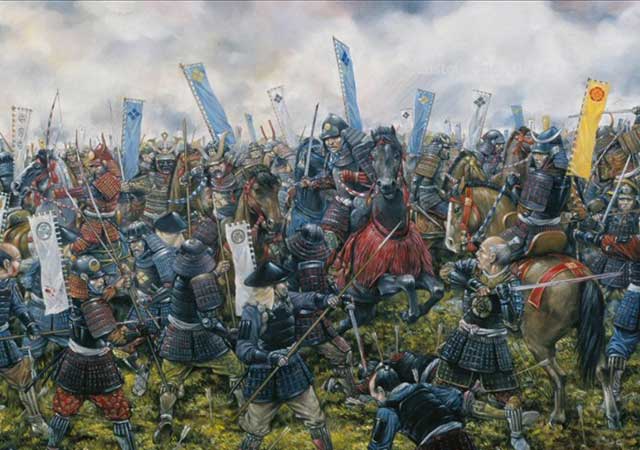
The Battle of Shizugatake, occurring during Japan's Sengoku period, unfolded between Toyotomi Hideyoshi (then known as Hashiba Hideyoshi) and Shibata Katsuie in Shizugatake, Omi Province, spanning two days from the 20th day of the fourth month of Tensho 11 (equivalent to June 10-11, 1583, on the Gregorian calendar). Katsuie, supporting Oda Nobutaka's claim as successor of Oda Nobunaga, engaged in a succession dispute within the Oda clan, ultimately favoring Hideyoshi.
At the outset, Katsuie and Sakuma Morimasa initiated attacks on Hideyoshi's fortified positions at Shizugatake, effectively overcoming Nakagawa Kiyohide's defenses. However, other sieges led by Toshiie and Kazumasu encountered obstacles. Despite Katsuie ordering Sakuma to retreat, the command was disregarded. Subsequently, Hideyoshi orchestrated a surprise counterattack, driving Sakuma's forces into retreat. Hideyoshi's pursuit led to the successful siege of Kitanosho Castle, prompting Katsuie and Oichi to commit suicide.
The Battle of Shizugatake marked a crucial moment for Hideyoshi in securing his role as the successor to Oda Nobunaga, effectively quelling one of the last significant challenges to his leadership, along with the Battle of Komaki and Nagakute in 1584. Renowned historian George Sansom regards the Battle of Shizugatake as a pivotal moment in Japanese history.
In the aftermath of the Honno-ji Incident in June 1582, which resulted in the demise of Oda Nobunaga and his heir Nobutada, a power vacuum and succession crisis unfolded within the Oda clan. Nobukatsu and Nobutaka, Nobunaga's second and third eldest sons, engaged in disputes over succession. Hashiba Hideyoshi emerged as a prominent figure, having vanquished Akechi Mitsuhide at the Battle of Yamazaki and with Nobunaga's heir being an infant. Shibata Katsuie, one of Nobunaga's trusted generals, initially supported Nobutaka's claim, challenging Hideyoshi's dominance.
In May 1583, Katsuie orchestrated multiple coordinated assaults on the forts of Shizugatake located in the northern region of Omi Province. Despite initial successes, Sakuma Morimasa's failure to comply with Katsuie's orders and Hideyoshi's swift response led to Katsuie's eventual defeat. Hideyoshi's triumph allowed him to assume control over much of the Oda clan, culminating in Nobutaka's suicide in June 1583.
Hideyoshi's consolidation of power persisted, though he faced opposition from Nobukatsu, who aligned with Tokugawa Ieyasu, until the Battle of Komaki and Nagakute in 1584.
See also
-
The Siege of Hara Castle

The Shimabara Rebellion of 1637–1638, which culminated in the siege of Hara Castle, was the last major uprising of the Edo period and had serious political consequences.
-
Battle of Tennoji
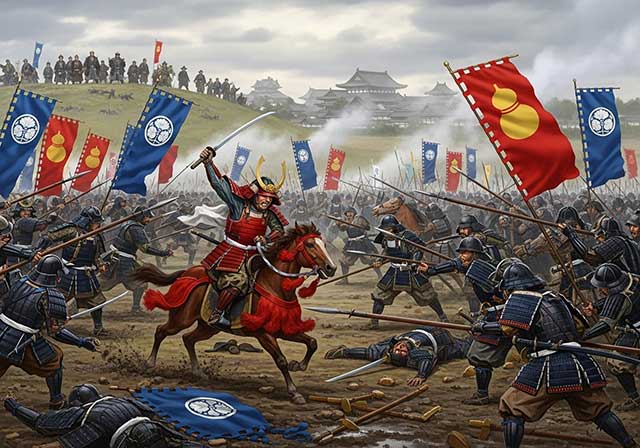
The confrontation between Tokugawa Ieyasu and Toyotomi Hideyori during the “Osaka Winter Campaign” ended with the signing of a peace treaty. On January 22, 1615, the day after the treaty was signed, Ieyasu pretended to disband his army. In reality, this meant that the Shimazu forces withdrew to the nearest port. On the same day, almost the entire Tokugawa army began filling in the outer moat.
-
Siege of Shuri Castle
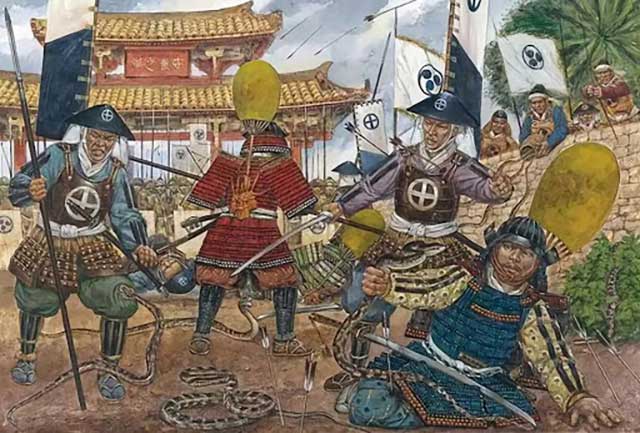
The Ryukyu Kingdom was established in 1429 on Okinawa, the largest island of the Ryukyu (Nansei) archipelago, as a result of the military unification of three rival kingdoms. In the following years, the state's control spread to all the islands of the archipelago.
-
The Siege of Fushimi Castle
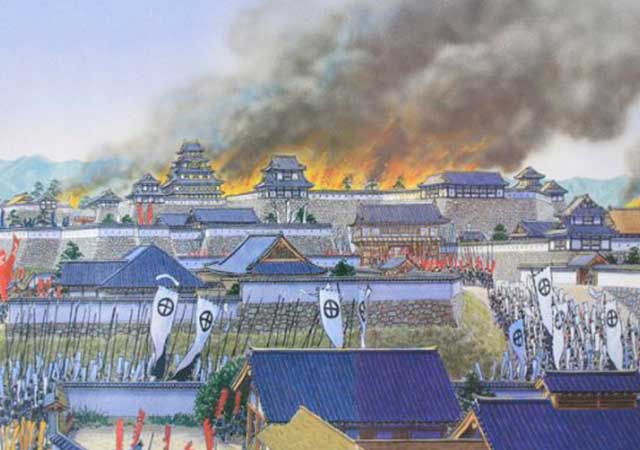
Fushimi can perhaps be considered one of the most “unfortunate” castles of the Sengoku Jidai period. The original castle was built by Toyotomi Hideyoshi in the southeast of Kyoto in 1594 as his residence in the imperial city.
-
The Siege of Otsu Castle
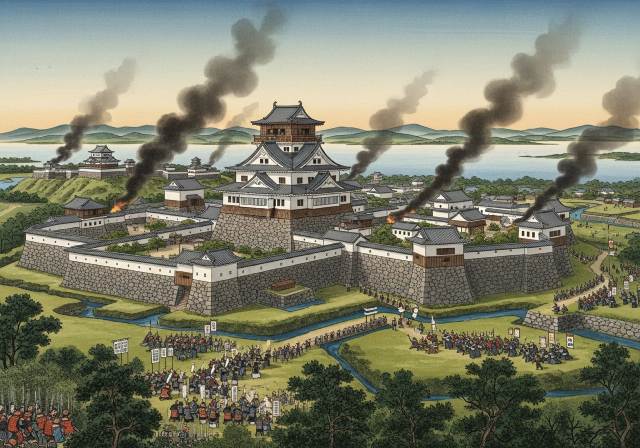
The siege of Otsu Castle was part of the Sekigahara campaign, during which the so-called Eastern Coalition, led by Tokugawa Ieyasu, fought against the Western Coalition, led by Ishida Mitsunari. Otsu Castle was built in 1586 by order of Toyotomi Hideyoshi near the capital Kyoto, on the site of the dismantled Sakamoto Castle. It belonged to the type of “water castles” — mizujō — as one side of it faced Japan's largest lake, Lake Biwa, and it was surrounded by a system of moats filled with lake water, which made the fortress resemble an island.
-
The Siege of Shiroishi Castle
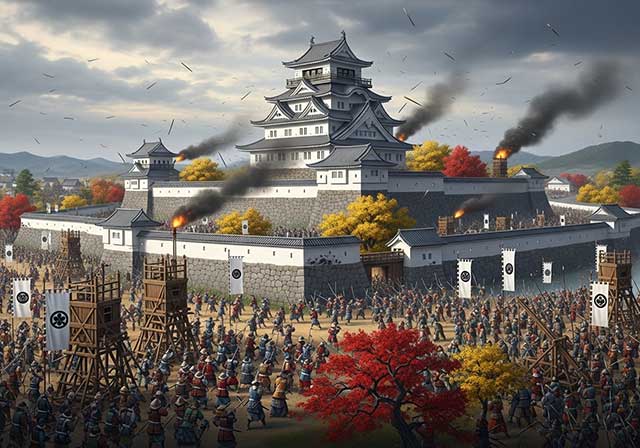
The siege of Shiroishi Castle was part of the Sekigahara campaign and took place several months before the decisive battle of Sekigahara. The daimyo of Aizu Province, Uesugi Kagekatsu, posed a serious threat to Tokugawa Ieyasu's plans to defeat the Western Coalition, and Ieyasu decided to curb his actions with the help of his northern vassals. To this end, he ordered Date Masamune to invade the province of Aizu and capture Shiroishi Castle.
-
The Second Siege of Jinju Castle
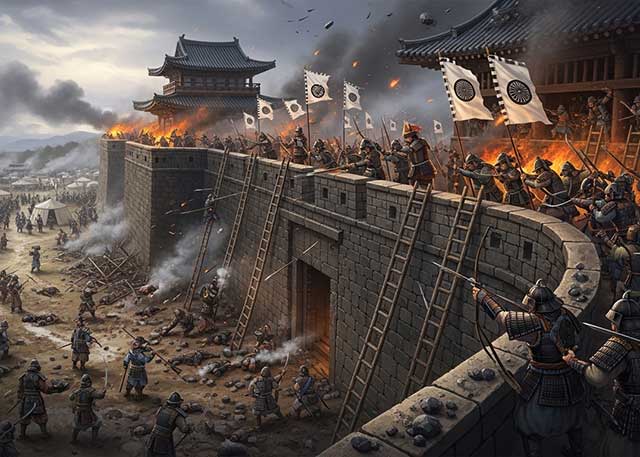
During the two Korean campaigns of the 16th century, the Japanese repeatedly had to capture enemy fortresses and defend occupied or constructed fortifications from the combined Korean and Chinese forces. Among all the operations of that time, the second siege of Jinju Castle is considered the most interesting from the point of view of siege warfare.
-
The Siege of Takamatsu Castle
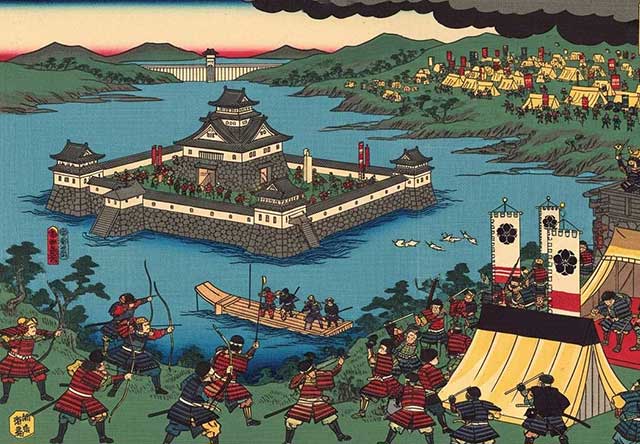
The siege of Takamatsu Castle in Bitchu Province is considered the first mizuzeme, or “water siege,” in Japanese history. Until then, such an original tactic had never been used.

